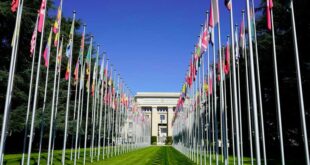Shehab Al Makahleh
In the 18th century, when Nathan Rothchild said: “who owns the information, owns the world”, he realized that this statement will be the focal point in political and international relations. However, retaining information is useless without owning technology, publishing and distribution networks. This explains why Western media are superior to others, thanks to advanced technology that helped such media gain more global influence.
Today, we are experiencing a steady and unprecedented development in the means of communication which affects our daily lives. If we look at the map of global and technological media, we find that the media is linked to the power of those countries. The American News Agency (AP) and Bloomberg constitute an important media arm of the United States globally, operating as one of the main sources of news and information. The other important agencies are Reuters and Agence France-Presse, which have several international centers. In a study I conducted more than 3 years ago, it was found that more than 85 percent of Western and international media materials are derived from the aforementioned media. Therefore, the stronger the media, the powerful the countries.
If we take the important social media platforms globally, we will find that they are mostly American, and the most important search engines on the Internet are mostly American, not to mention the major programming, electronics and technology companies that run major servers, even those dedicated to social communication.
Until the end of August 2021, 11,139 satellites had been launched, and by the end of April 2021, there were 7,389 satellites in operation, and the United States had 1,897 satellites, followed by China with 412 satellites and Russia with 176 satellites.
This elite of countries with state-of-the-art communication, which also includes tech giants, controls what we read, watch or listen to. Today, the effects of media are more visible in our reporting of news online. About 38 years ago, 50 companies controlled the media in America. Today, 6 powerful companies control 92 percent of what an American citizen reads, watches or listens to, for example. Here we see how such communication and media channels shape the mentality of citizens and influence them.
At present, the world is affected by news about financial markets, political developments, local incidents and weather reports that reflect on everyone’s life. Today’s news affects our lives directly and indirectly because it is available in many forms: digital (online news content), print (newspapers and magazines), and radio (television and radio).
Despite the importance of these media outlets, they suffered greatly during the transition from traditional media to digital, and the solution was to link these media to state revenues or to giant financial and technological institutions that provide them with financial resources.
Therefore, media has become an important weapon in the hands of globally active players to extend their influence, spread their culture and influence other peoples and countries with an army of media professionals and technologists who are no less important than the regular armies.
A reader of Gord Lakoff’s book: “The Political Mind: Why You Can’t Understand 21st Century American Politics with an 18th Century Brain” internalizes that the media is the source of this transformation. Media professionals frame political battles according to stages: Framing the battlefield as creating a scenario of invasion or an imaginary enemy by starting to promote danger, giving political media professionals the right to prepare for the plan under the slogan of self-defense, dealing with enemies and changing their culture, faith and beliefs, and finally drawing the features of the future that awaits that country, economically, politically, militarily, culturally and scientifically.
This is exactly what the New York Times published in 2008 about how countries infiltrated media networks to dictate reports and commentary to pass specific policy through analysts and veteran media professionals working in supposedly independent media networks. The question here is: Who owns the media? In modern economies and societies, the availability of information is fundamental to improving decision-making. The media works to provide information.
Information is a public commodity, monopolizing it would be very difficult because the day must come when the truth will come out. Information has a price, only business tycoons know that a single news may lead their properties to the abyss or raise the value of those properties sky-high. Therefore, we see developed countries ruled by media institutions owned by global moguls and magnates of money because they know that there is a close link between business and the media.
Can global business and financial tycoons control the media to spread their political interests? This is prevalent in the West, especially in the United States, where the tycoons of money, through their ownership of the media, frame the minds of viewers, listeners and readers in a way that serves the interests and whims of capital owners. Therefore, talking about media ownership is very important globally; in the West today, billions of dollars are pumped every day through the media, which affects their objectivity, integrity and impartiality towards various local and global issues.
In the developing nations, state ownership of the media emerges with limited media activities for private stations. It seems that the rapid spread of news and reports through social media spaces may lead to changing the course of governments in the countries that own the main media, starting privatization and changing laws to align with international and regional economic, political, cultural and media developments. The recipients’ curiosity push them to search for ways to satisfy their thirst for news and information, and not the stereotyped and framed information to pass encrypted messages to the viewers, readers, and listeners.
 Geostrategic Media Political Commentary, Analysis, Security, Defense
Geostrategic Media Political Commentary, Analysis, Security, Defense





